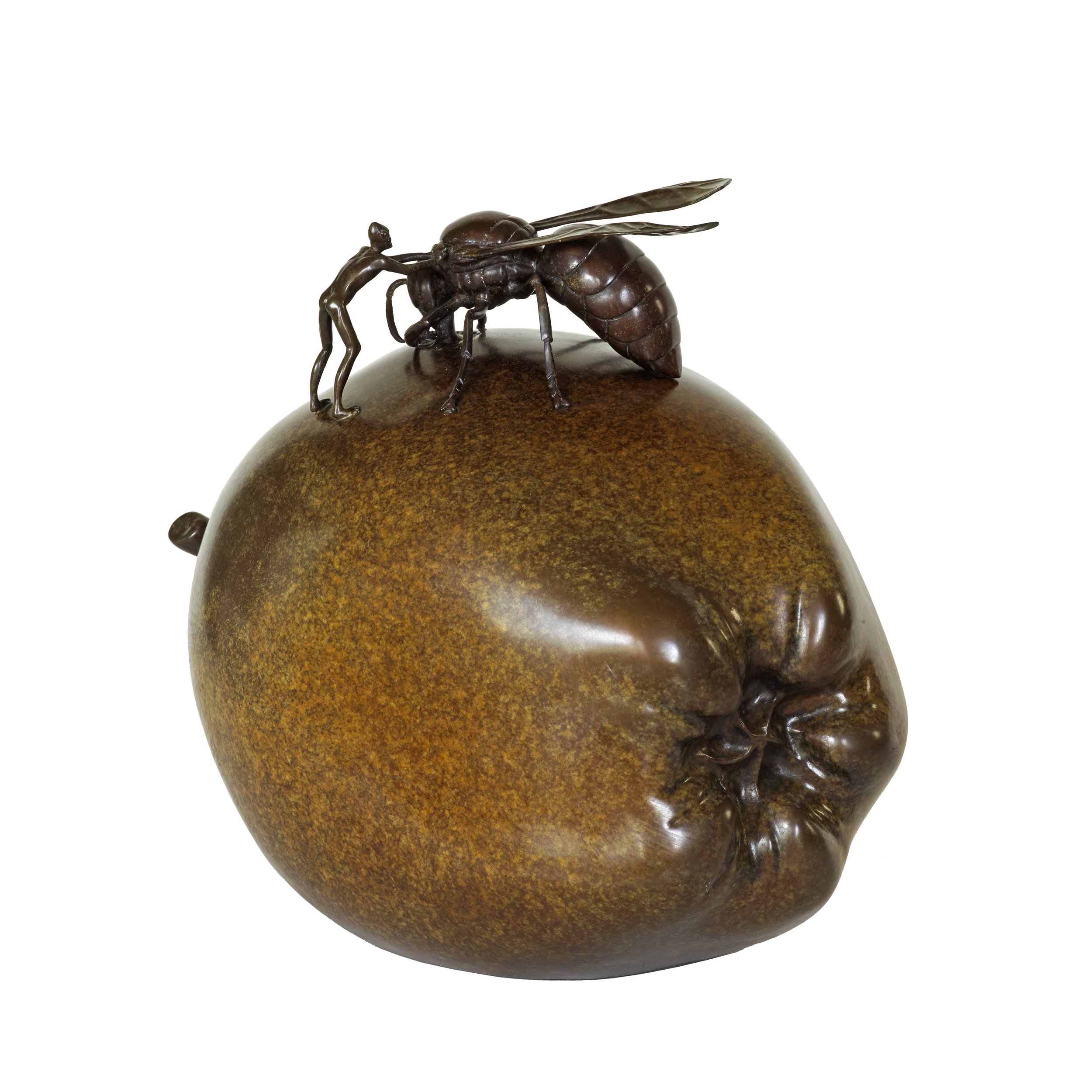We are expanding our on-line presence for our insect sculpture collection some of which can now be viewed on www.onlinegallery.art
This new venture will hopefully encourage readers to peruse the art work of other artists on a site that offers a wide range of mediums, subjects and styles.
Too date the Hornet on the Apple shown below and the Stag beetle have been added to online gallery with more pieces coming soon. In our fictional world humanoids may playfully spar with hornets for grazing rights to an apple but thankfully the hornets dominance is secured by it’s greater armory and strength.
In this same fictional reality stag beetles often provide transportation and other services for their humanoid friends but their relationship is symbiotic not exploitative and both species enjoy the fruits of each other’s labor.





